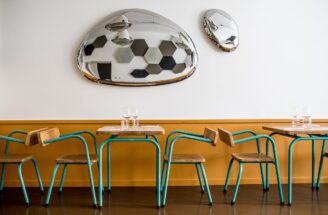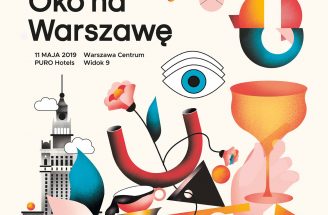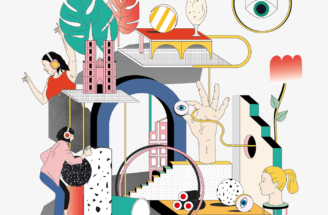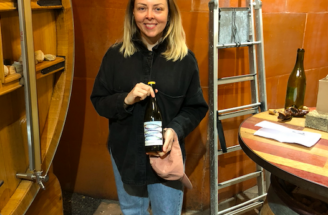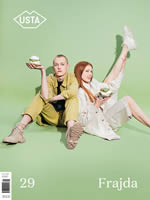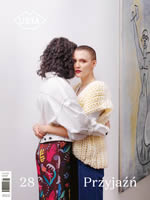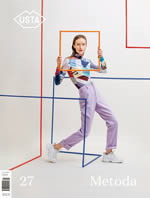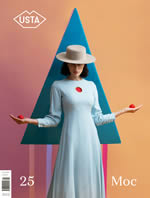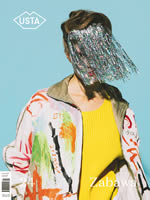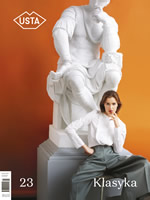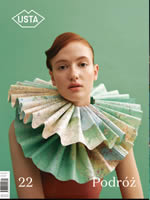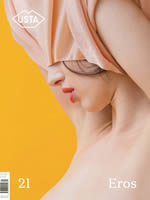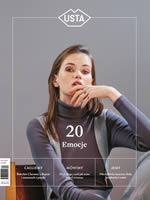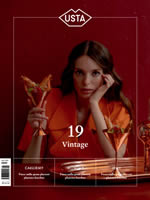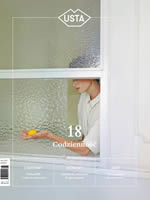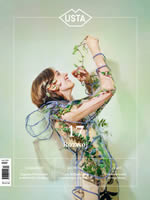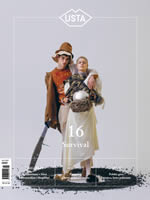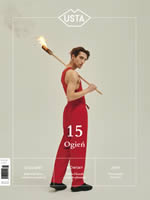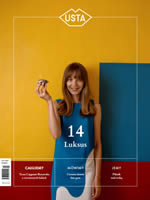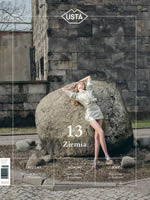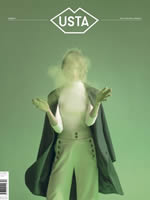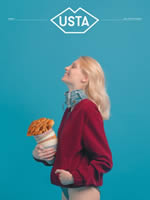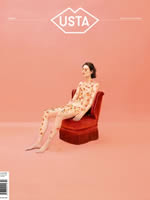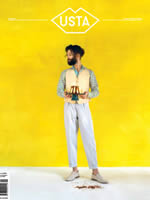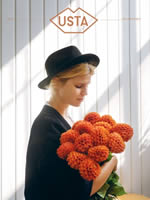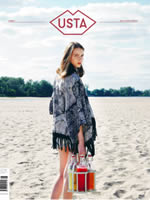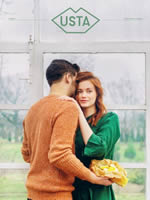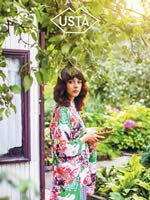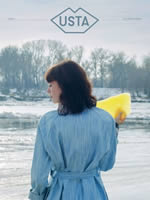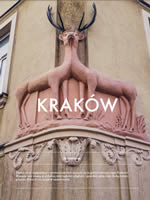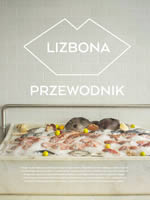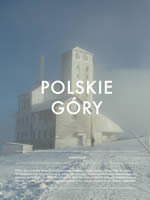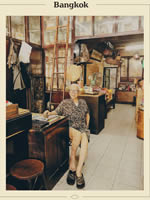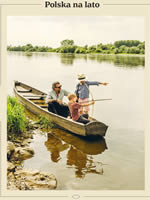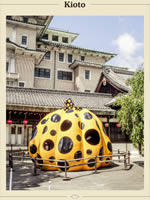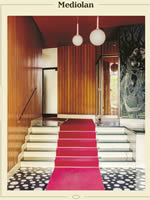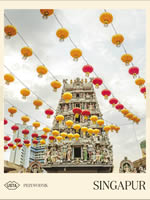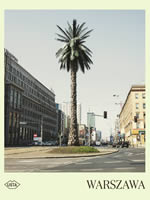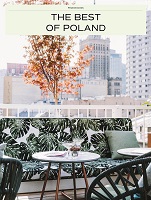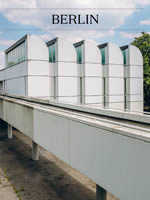Hotel on an island
We were delighted that at the time of preparing our guide a hotel chain, which we particularly appreciate, opened a hotel in Gdansk. This is already the fourth location of Puro after Wroclaw, Krakow and Poznan. The idea to create hotels in city centers, modern but subtly melting into the surrounding is very successful. The form of the hotel, built on the Granary Island (Wyspa Spichrzów), which is resurging, refers to the shape of the houses in Gdańsk, like those directly in front of the hotel. In the lobby a marine rope climb high to the ceiling. Photos of tattooed sailors decorate the menus of the Restaurant Ink. Here you will not find shoddy imitations of designer furniture, only the originals, carefully selected and (which is also important) not the most obvious ones. We like Puro for its comfortable beds, young and clever staff, a noble tiled bar and a lobby area, which is dominated by a common table, stocked with interesting albums and magazines. But what captivated us the most is the fact that on the walls instead of the typical tacky graphics from hotel chains, there are hanging Gdańsk artists’ works – picture from a shipyard by Michał Szlaga and a picture of mosaics from the Gdansk train station by Szymon Rogiński. For this type of ideas, identification of the Restaurant Ink (very tasteful) or the dinner delivered at the opening of the hotel by Anna Królikiewicz (our tour guide and collaborator) responsible is the London-based Double Decker design studio. We like it very much!
Puro Hotel, ul. Stągiewna 26 | Gdańsk
www.purohotel.pl/gdansk

Unrest in Wrzeszcz
We didn’t see such enthusiasm from residents of the Tri-City in a long time. When they hear “Kurhaus” their eyes start to shine. The one who knows how to decipher this name is one of us and not only understands what the third wave of coffee, aeropress or Czarny Deszcz is, but also knows where to meet artists, poets and other alternative sort of Tri-city youth. Since a year in Wrzeszcz, in somewhat forgotten eclectic tenement houses from the turn of the century at the roundabout Wajdeloty operates Kurhaus (from German: spa house), which is open usually during the day, but from time to time there are also held evening events. There is a good coffee from the Czech Doubleshot or Wrocław’s Czarny Deszcz. For the quality of the coffee takes care of the owner Milena Kotecka. She treats Kurhaus like home. In the window there are macramé with flowers, furniture from the 60s, which was renovated by friends from Sztuka Mebla and the table with board games makes you linger here. Kurhaus serves homemade cakes and beer from small breweries like Reden or Stu Mostów – If someone likes it here, he comes back to us – says Milena. The Kurhaus generated unrest in Dolny Wrzeszcz. Since its opening the district came to life and another premises worth a visit were opened: Fukafe, vegetarian Avocado or Knudel with homemade pasta.
Kurhaus, ul. Aldony 6 | Gdańsk Wrzeszcz
www.facebook.com/kurhaus.wrzeszcz
A thousand bottles
A small alley near Monte Cassino and the Grand Hotel. It is worth a visit, because in the cellar at number 1 there is one of the oldest in Poland, modern wine shops. Festus operates for 19 years, importing and selling wine. Wiktor Zastróżny stands behind it, an economist by training, winemaker by passion, founder of Sopot Wine Society and author of “Wine-tasting dictionary.” In conducting the wine store helps him his son Piotr Zastróżny. They advise clients on site, invite them to a pleasant tasting. They started with French wines, and today they import from all major wine regions of the world. Mostly from small producers, like the Spanish Toro Albala, Alsatian, or Chilean Lorenz Pérez Cruz. In addition to wines they also have Scottish and Irish whiskeys, armaniacs, cognacs and champagnes from Drappier. On the shelves of Festus you will find more than 1,000 bottles, so you have a big choice. In the Tri-City they are also in Klif Gdynia, Galeria Bałtycka in Wrzeszcz or in the hotel Lalala in Rzemieślnicza Street in Sopot, which also belongs to the Zastróżny family and is in boutique style and it’s fabulous.
Festus, ul. Morska 1 | Sopot
www.festus.pl
Chess or ambrosia?
When it comes to nightlife, in Gdynia rules Desdemona Club. A beauty from Shakespeare’s plays with Tri-City roots has two levels and three rooms. The ground floor is the day area, Café with copper bar, a coffee portioning distributor, a stone sculpture of a woman’s face hanging over the granite bar, crystal mirrors, rugs and marble tables. And at the bottom you will find a bar and a room where concerts are held. Desdemona has been running for 16 years and is multigenerational: during the day you can meet seniors here drinking coffee and playing chess, and in the evening the alternative youth drinking beer, spritzers or the house specialty – ambrosia – and listening to independent music.
Desdemona, ul. Abrahama, 37 | Gdynia
www.facebook.com/klubdesdemona
Collective and “Goździkola”
We don’t belong to the enthusiast of walks on “Monciak”, but the tour guide tells us to do it, so we clench our teeth and go through streams of people flowing in both directions on the pedestrian area. Fortunately, when we get to Dwie Zmiany, we can moor in a quiet and completely non touristic place. It is open since December last year and belongs to a Tri-City social cooperative group of artists. They banded together because they didn’t have their place – a club, gallery or bar. They share responsibilities smoothly: Maciek and Tomek deal with the gallery, Anne with the performative stage and – together with Julka, who is by the way great at DIY – is responsible for the kitchen and bar, Kasia for workshops for the children, Adam for events and concerts, Marcin for technical issues. Krystian is the president. Once here was the legendary Sopot restaurant, café and bistro Złoty Ul. – Here was my chair when I was sitting with my dad eating ice cream – says our guide, showing the terrace. – There was once a white piano – Tomek tells us, pointing to the place that today is occupied by wooden tables, chairs and a sofa. – We don’t employ bartenders or waiters. We don’t want to give away such an important part of the job. People who come here are our guests, not customers. Every day we have a different lunch menu, homemade cakes, excellent coffee and brilliant Goździkola (a drink prepared by Julka on the basis of cloves).
Dwie Zmiany, ul. Bohaterów Monte Cassino 31 | Sopot
Pegasus, ship and celestial bodies
It’s worth going to the Gdynia railway station, even if we don’t travel by train, to see the spacious interiors which are a combination of pre-war modernism and post-war socialist realism. Gdynia survived the war without much damage. One of the few buildings that was destroyed was the main station. It was rebuilt 1956 to a design by professor Wacław Tomaszewski (author of Dom Bawełny and the building of the Maritime University), and you can enjoy his artistry again after a complete renovation in 2008, during which the station’s waiting room unexpectedly unveiled the frescoes of the 1957 sea landscape, polychrome with celestial bodies and the zodiac, mosaics with Pegasus on a Polish Railways wheel, shipyard cranes and ships. Professor Juliusz Gizbert-Studnicki of the Gdansk Academy of Fine Arts was the author. This is a unique example on a national scale of respect for the tradition of Polish architecture.
Main Train Station Gdynia, ul. Konstytucji 1
Tri-City GUIDE

